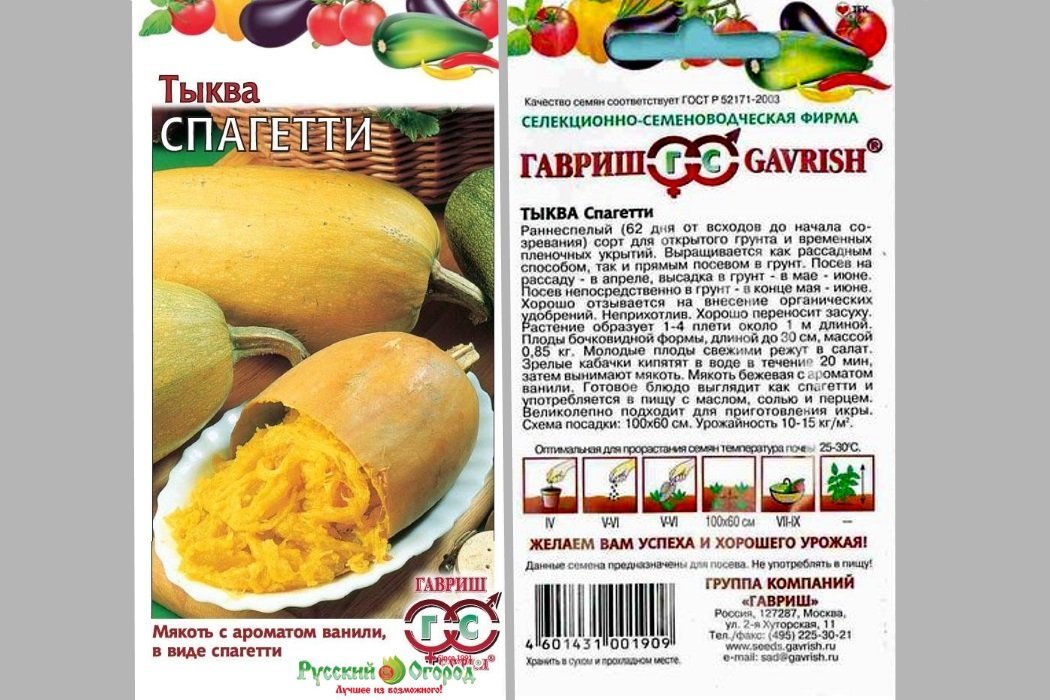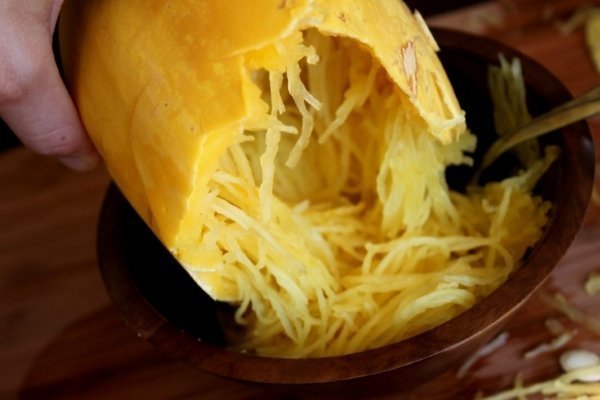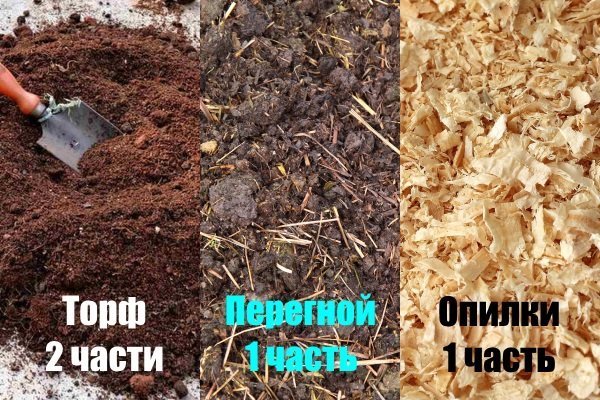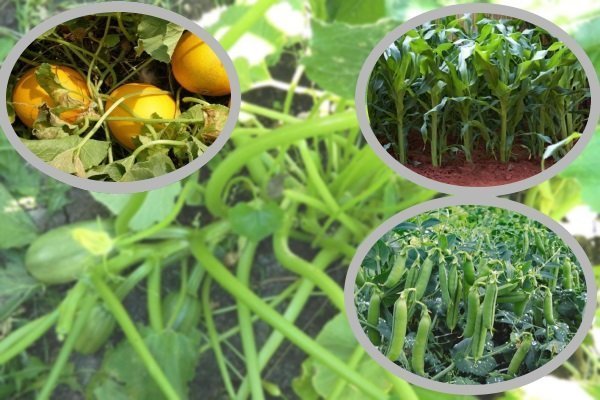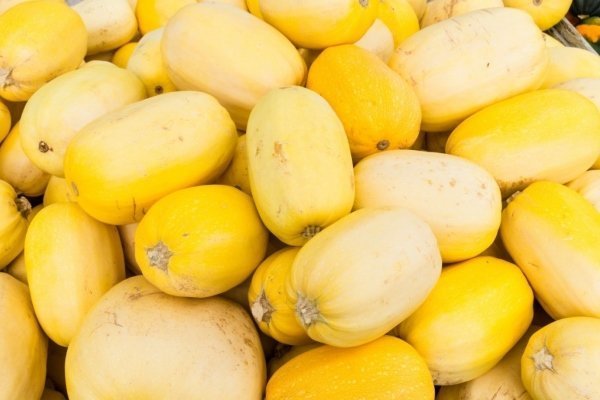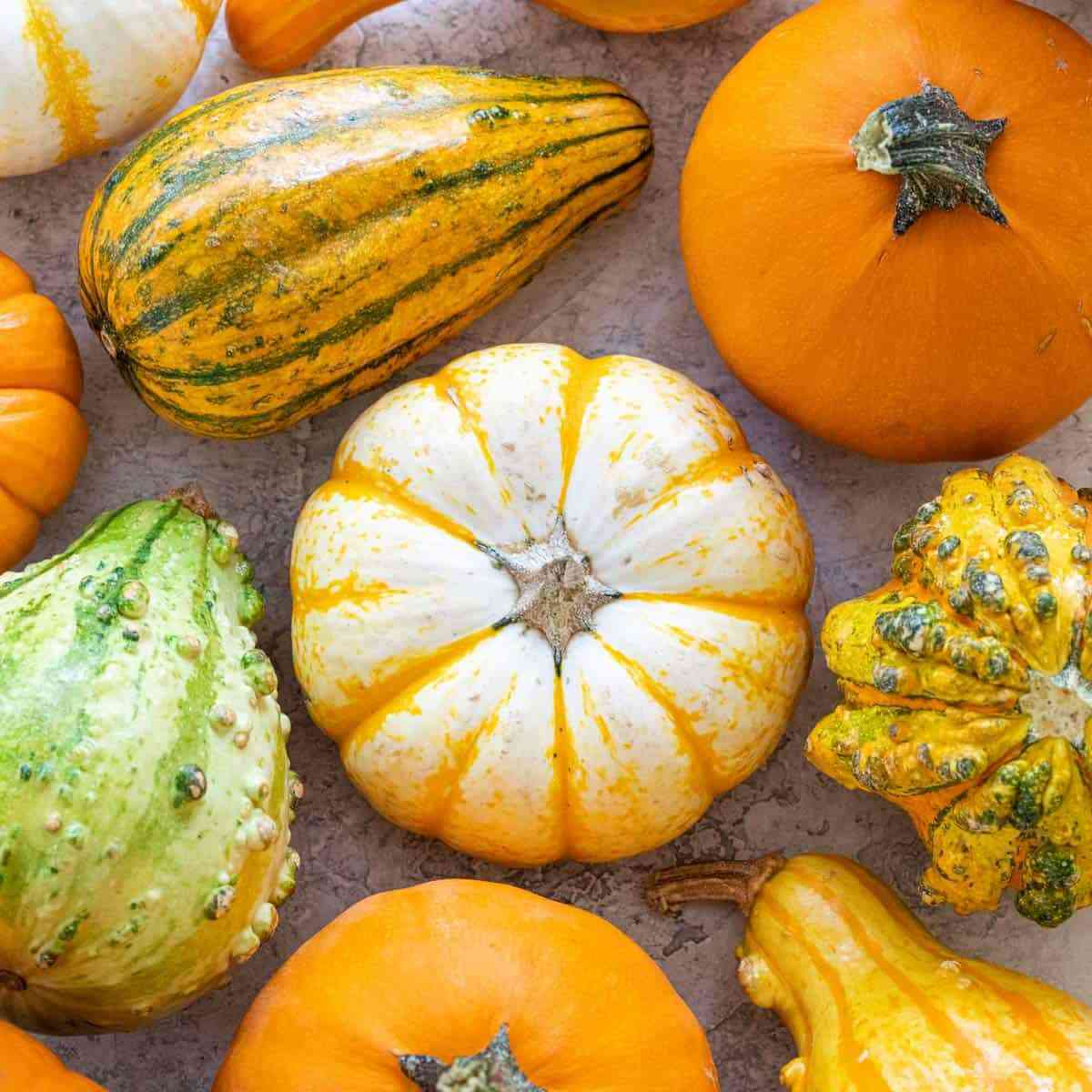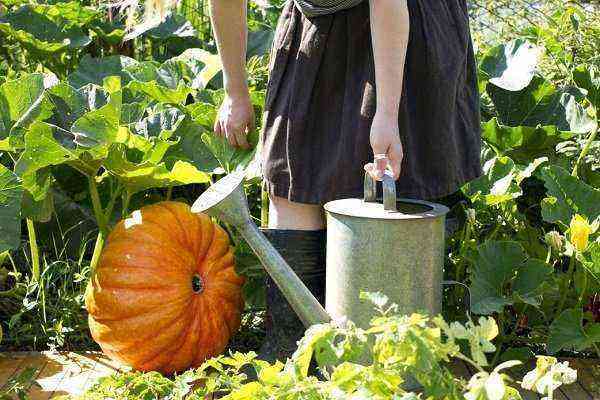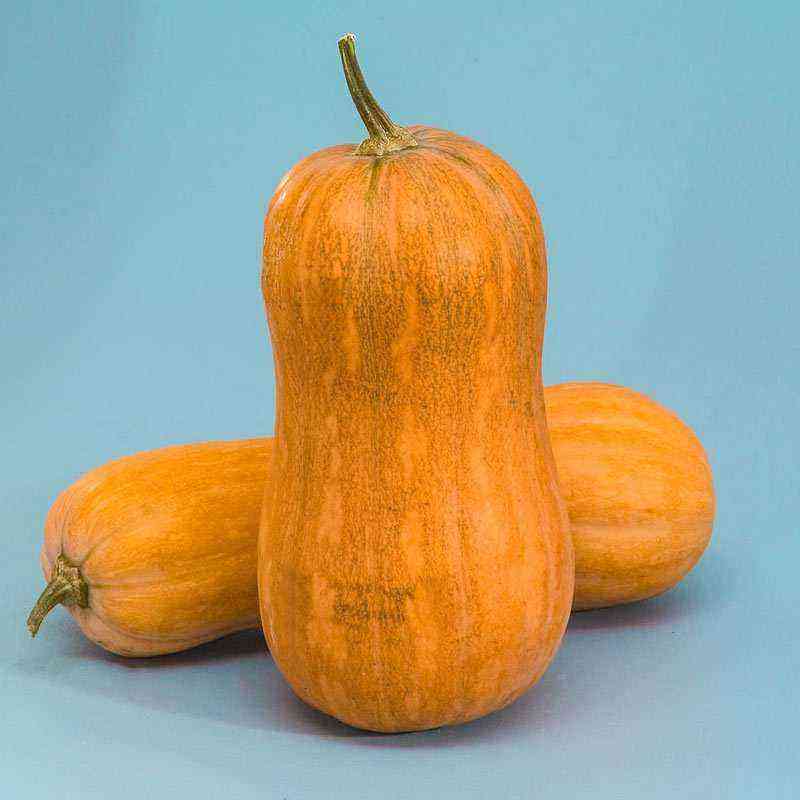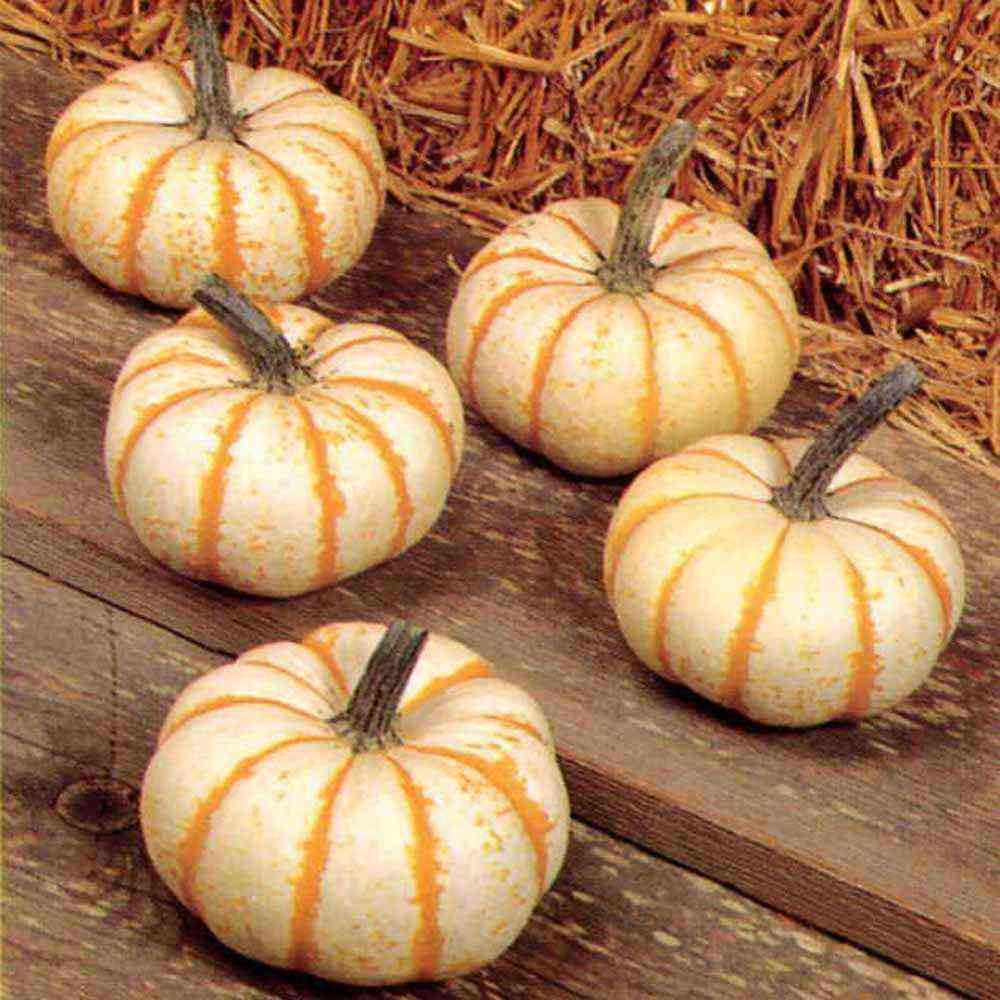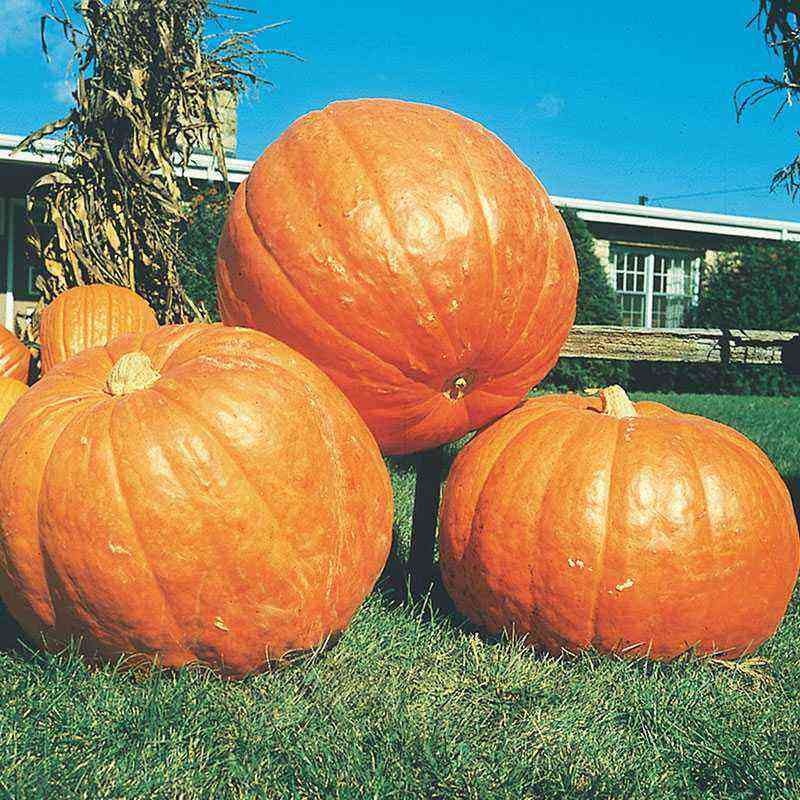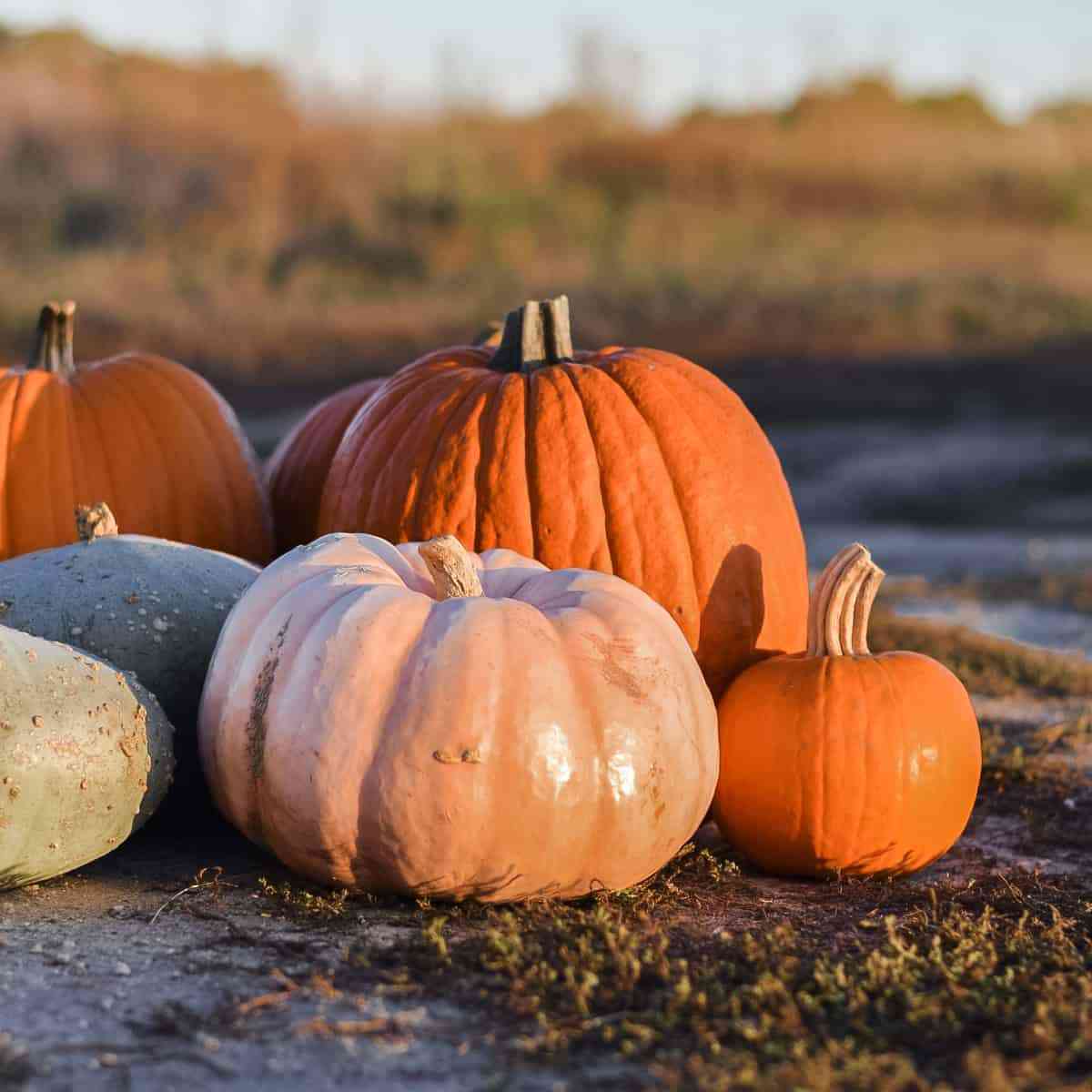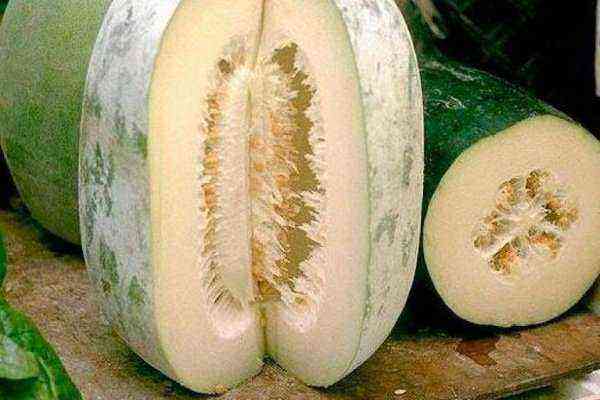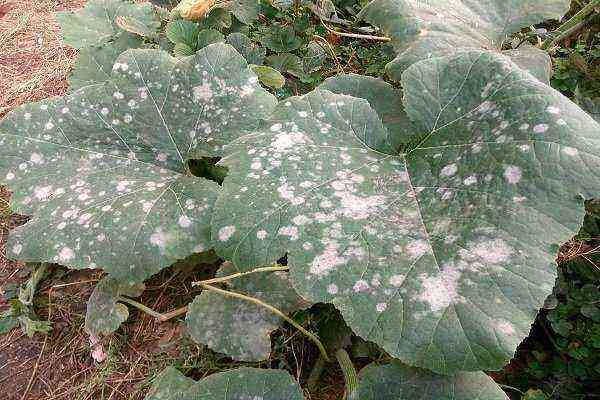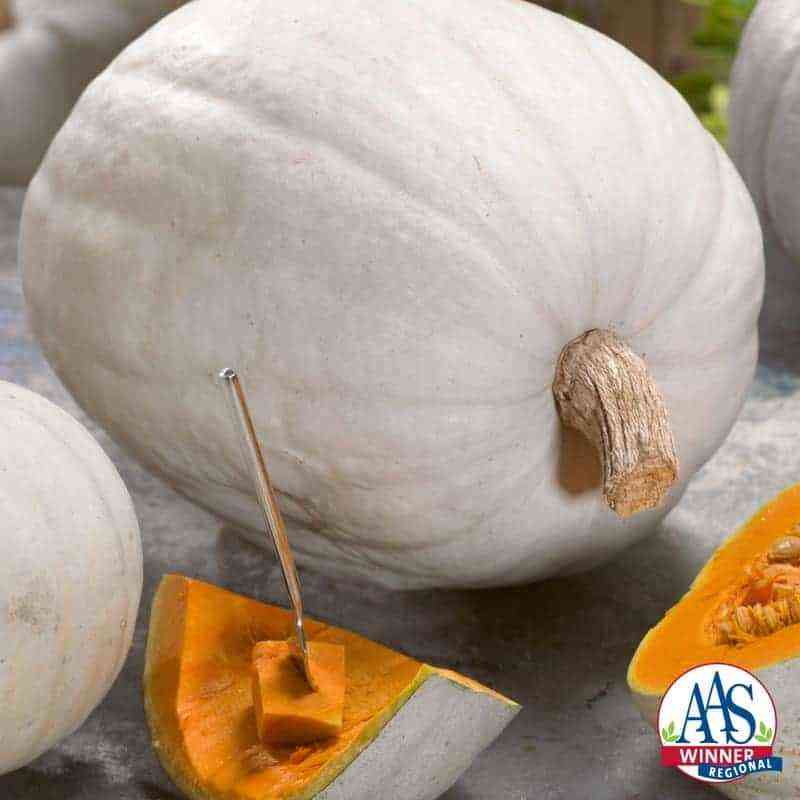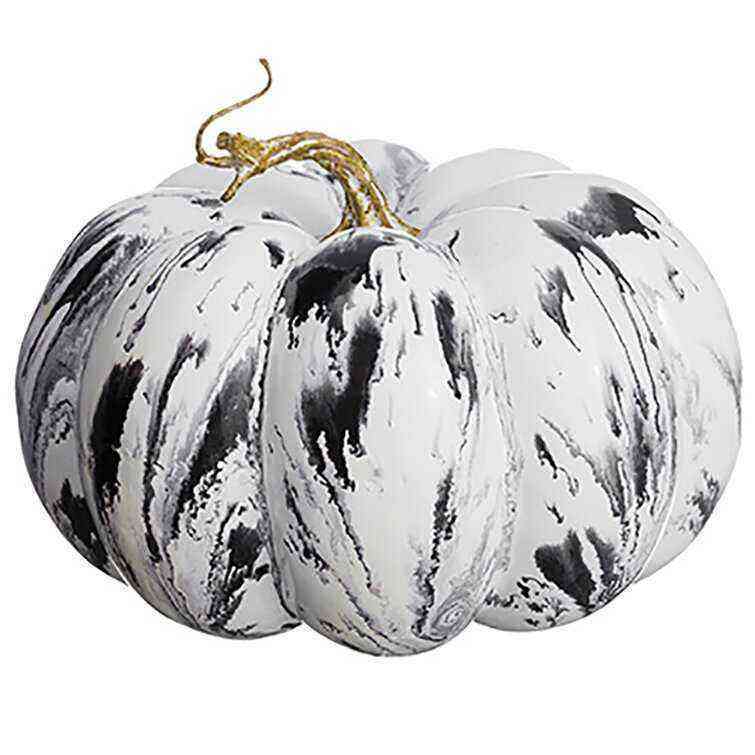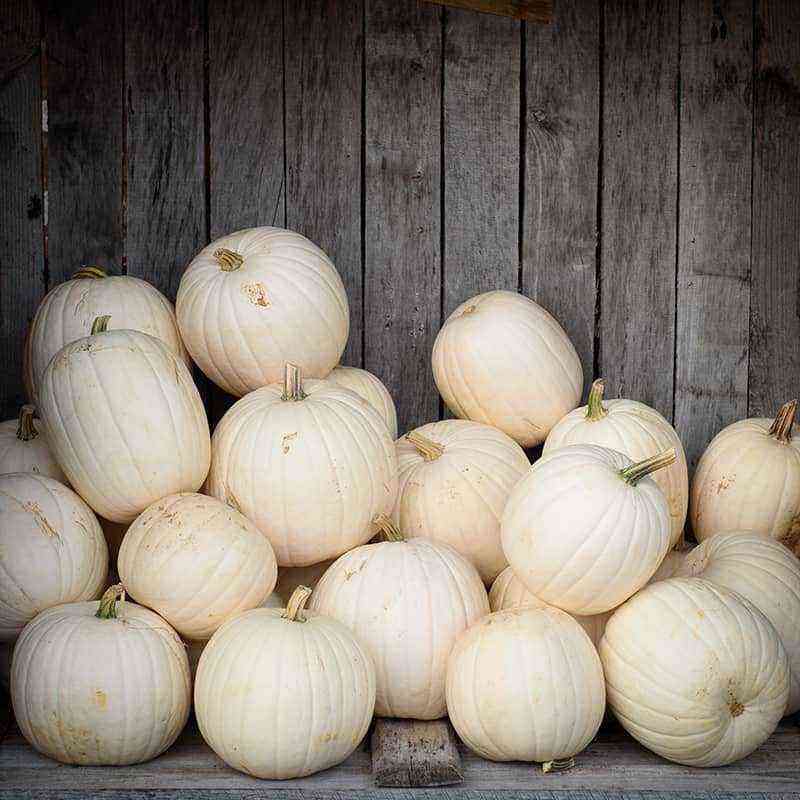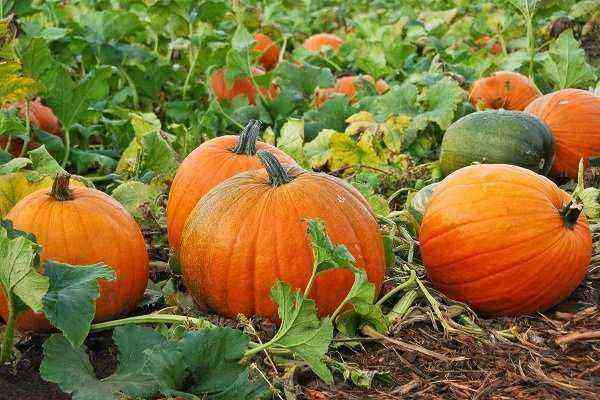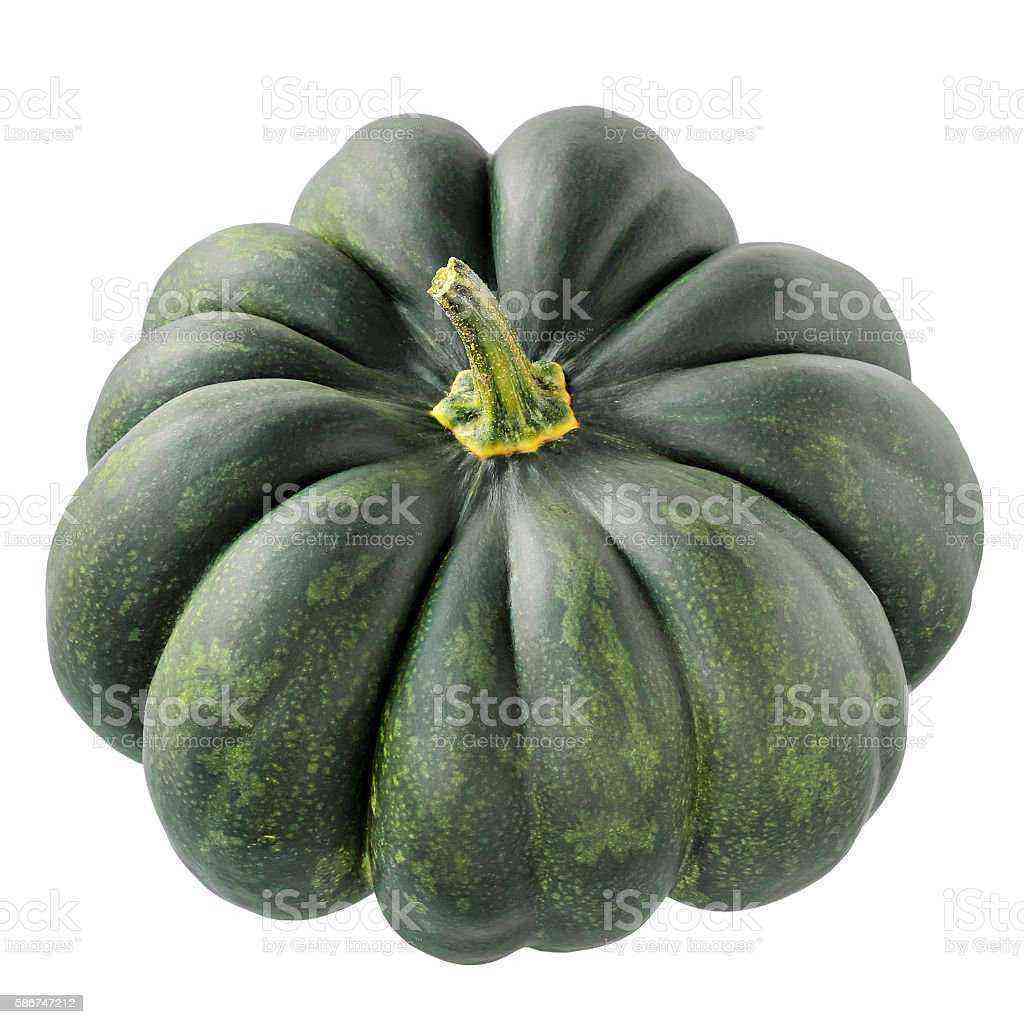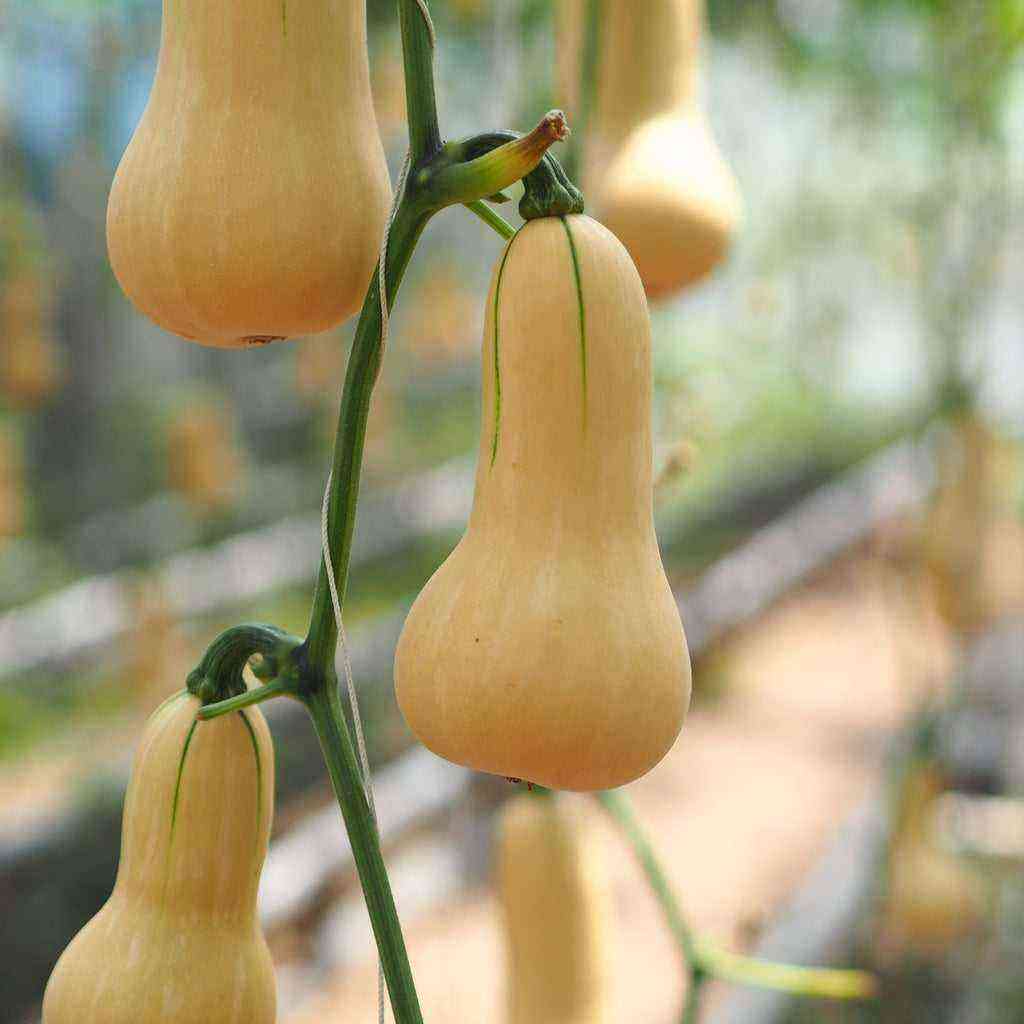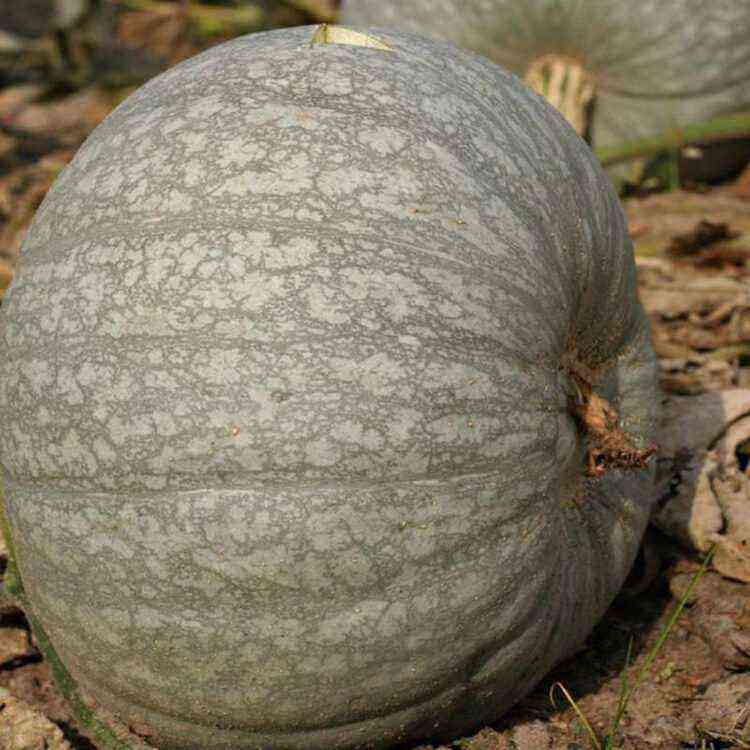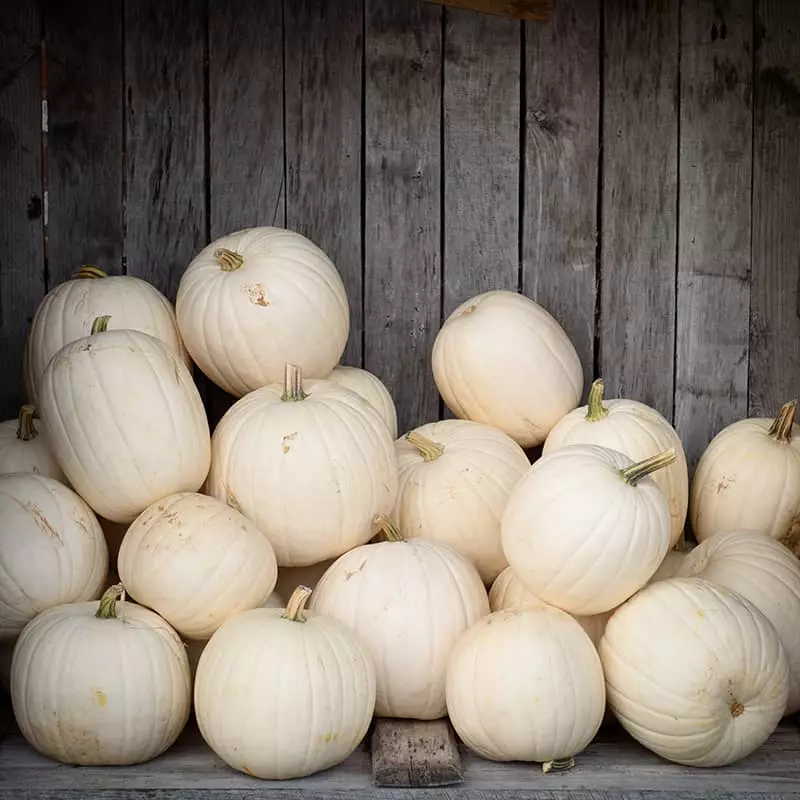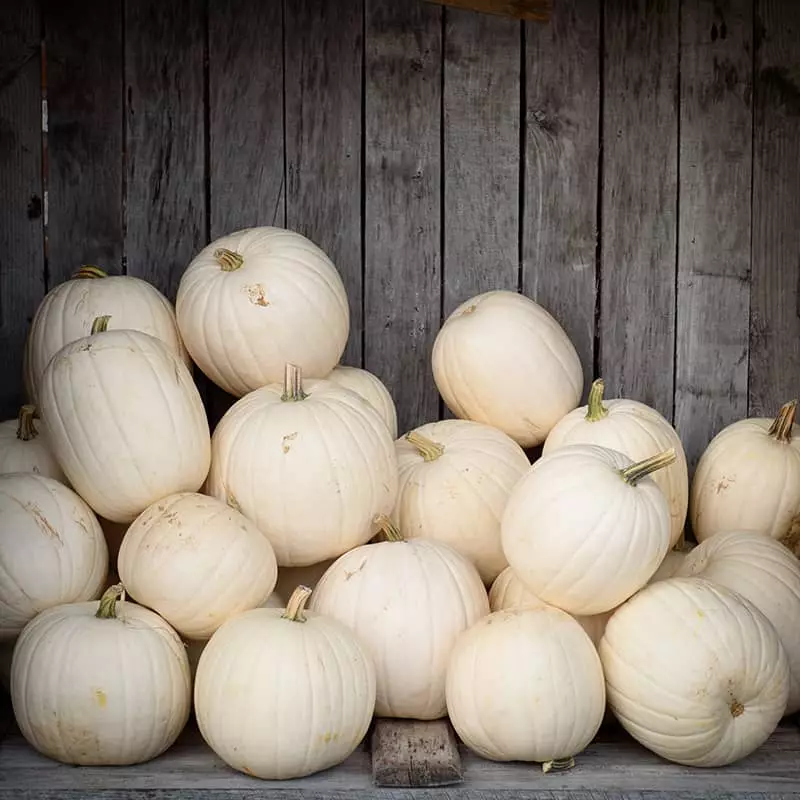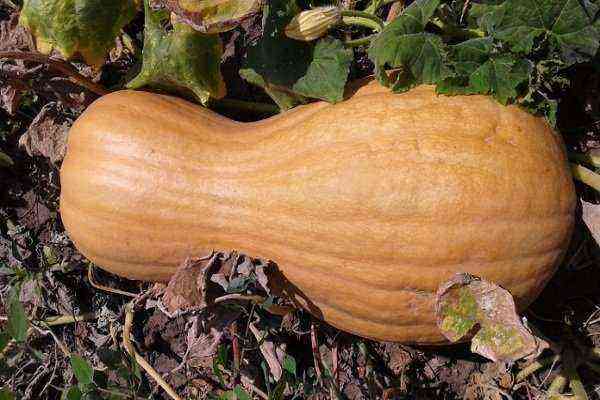Spaghetti squash will certainly appeal to fans of garden novelties. Its slightly sweet fruits are not only extremely tasty, but also healthy. We will learn how to plant and grow this original pumpkin in your garden, and how it differs from ordinary varieties.
Pumpkin Spaghetti: variety description
This pumpkin is not without reason called “Spaghetti” or “pasta” – when the fruit ripens, its flesh becomes fibrous. Thin yellow fibers in appearance – poured pasta. After cooking, the resemblance to spaghetti intensifies.
In Russia, this unusual pumpkin appeared quite recently, but has already managed to become popular with our gardeners. In fact, “Spaghetti” is not exactly a pumpkin, it is a hybrid obtained by crossing a pumpkin with a zucchini.
Another name for pasta squash is squash. This word comes from the language of North American Indians. It translates as “eaten raw”.
Spaghetti pumpkin
Spaghetti Pumpkin Seeds
This is what the flesh of a ripe Spaghetti pumpkin looks like
Productivity and other characteristics
A brief description of the Spaghetti variety:
- Plant. It has a strong root system and requires a lot of space. The lashes are long, grow up to 4,5 m in length. The stems are hollow, covered with a hard pile.
- Leaves. Large, green, sprawling. It looks like an ordinary pumpkin top.
- Flowers. Large, bright yellow or orange.
- Fruit. The shape is round or oval. The peel is light yellow or deep yellow. The pulp is fibrous, medium-dense, bright yellow or orange in color, with vanilla and walnut flavors. The length of the fruit is up to 30 cm. Inside the fruit are elongated seeds.
Spaghetti pulp has a low calorie content, in 100 g there are only 25 kcal.
Features of the variety:
- Bloom. Runs from June to October. These are the dates for the middle lane, in other regions they are adjusted in accordance with climatic features.
- Early maturity. Approximately 2 months elapse between germination and harvest. Vegetation period – 110-120 days.
- Productivity. Up to a dozen pumpkins grow on one bush. The average fruit weight is 4 kg. One bush gives 20-30 kg.
- Storage. Fruits store no more than 2 months. To increase the shelf life, the pumpkin is well dried in the sun before laying. The optimum room temperature is from +3 to +10°C.
Advantages and disadvantages
Spaghetti Benefits:
- the crop ripens early;
- long fruiting;
- excellent taste of pulp;
- fruits are well stored – subject to storage rules;
- fruits are useful for the body and do not cause allergies;
- good yield.
Cons:
- vulnerability to temperature changes – in the middle lane it is necessary to grow “Spaghetti” under the film;
- requires fertile, well-moistened soils – it grows poorly on heavy and arid soils;
- affected by some diseases that reduce yields;
- does not tolerate cold weather.
Growing Pumpkin Spaghetti
In open ground, seeds are sown mainly in the southern regions. In the middle lane, a seedling method of growing is recommended, it allows you to bring fruiting closer and prevent freezing of seedlings.
Choice of soil and capacity for planting
The best option for growing seedlings is in peat tablets. Then you can do without picking. Pumpkin seedlings do not tolerate transplanting well, and it is not worth transplanting once again.
If there are no peat tablets, ordinary wooden boxes can be used. Fill them with a mixture purchased at an agricultural store – a universal substrate or soil mixture for cucumbers is suitable.
Seedlings can also be grown in individual glasses or pots with a diameter of 6 cm.
Soil for seedlings can be prepared by mixing peat, humus and sawdust in a ratio of 2: 1: 1. For each kilogram of the mixture, put a teaspoon of nitrophoska. Before planting, the soil must be disinfected.
Optimal sowing time
Sowing seeds for seedlings usually begins in mid-April. Planting seedlings in open ground is carried out from the second half of May. These are recommendations for the middle band. In other regions, it is necessary to make an adjustment for climate.
In open ground, seeds are sown at the end of May.
Preparing the seeds for planting
Seeds are bought at an agricultural store or harvested in autumn from fruits. They are dried at normal temperature. Do not dry in the oven – the seeds will die. Until spring sowing, the seeds are stored in the dark and dry, preferably in a linen bag.
Before sowing, prepare the seeds:
- Sort out the seeds. Only large, small and empty ones are suitable.
- Soak the seeds in warm water. Let them stay overnight.
- Remove the seeds from the water and wrap them in a damp cloth – let them lie down for 2-3 days. To make the seeds germinate faster, moisten the cloth with water from time to time.
- Place the germinated seeds in the refrigerator for three days – for hardening.
- To disinfect the seeds, soak them in a 2% potassium permanganate solution for half an hour.
Germinated seeds are ready for planting – you can plant them in containers with earth or directly in open ground.
Seeding for seedlings
When the containers are found and the seeds are prepared, you can proceed to sowing seeds for seedlings:
- If boxes are used to grow seedlings, pour sawdust on their bottom. This will help the soil retain moisture longer.
- Fill the container with substrate and water generously.
- Make small holes in the soil 4-5 cm deep. The intervals between the recesses are 2-3 cm.
- Plant the seeds and cover them with soil.
- Water the crops with a spray bottle.
- Cover with a transparent material – glass or film.
- Place the seed boxes in a room with a temperature of +25 °C.
Care of seedlings
Features of seedling care:
- To prevent seedlings from stretching, remove the film as soon as shoots appear.
- Seedlings need light – put them in a well-lit place. Best of all – on the windowsill of a south-facing window.
- Maintain the optimum temperature – from +15 to +25 ° С. If it is too warm, the seedlings will be very tall, and in the cold they will begin to lag behind in growth and get sick.
- Water the seedlings regularly, the soil should not dry out. Use warm settled or boiled water, try not to get it on the leaves.
- Fertilize the seedlings a week after germination. Prepare a solution – put 2 g of nitrophoska per liter of water. Pour liquid fertilizers under the root – they should not get on the leaves, otherwise there will be a burn. Or feed the seedlings with a solution of mullein (for 10 parts of water – 1 part of mullein).
- 14 days before planting seedlings in the ground, start hardening. Take it outside every day. Start with 20 minutes and work your way up to 2-3 hours.
Transplanting seedlings in open ground
Features of planting seedlings:
- Timing. Seedlings are planted about a month after planting the seeds. But you can’t focus only on the number of days that have passed from the moment of sowing – a stable positive temperature should be established on the street. Seedlings should have at least two full leaves.
- Plot. They choose a place taking into account the size of the plant – the Spaghetti pumpkin needs space. The culture grows well in fertile sunny areas, in the shade this pumpkin will not bear fruit.
- predecessors and neighbors. The culture grows well after tomatoes, potatoes and legumes. It is forbidden to plant “Spaghetti” after cucumbers, squash and zucchini. But you can coexist with them, as well as with melons, corn, peas. Growing near them, squash pumpkin gives good yields and does not get sick.
The soil is prepared in the fall:
- The plot is fertilized with manure – per 1 sq. m pour out 4 kg.
- The beds are being dug up.
- If the soil is acidic, add 200 g of ash per 1 sq. m.
Seedling order:
- Half a month before planting, cover the area with a black film so that the soil warms up better.
- Prepare holes 10-12 cm deep. The distance between them is 80 cm.
- Pour hot water over the holes. After the water is absorbed, plant the seedlings. If the seedlings grew in peat tablets, it is not necessary to shake off the soil from the roots. If in boxes – take seedlings so that there is little earth left on the roots.
- Cover the roots with soil and compact it with your hand.
Seedlings are best planted in cloudy weather or in the evening.
Care and cultivation of spaghetti pumpkin
In order for the Spaghetti pumpkin to give a full-fledged harvest, the plant needs, in addition to the usual agrotechnical measures, also pinching.
Watering: volume and timing
Features of watering pumpkin “Spaghetti”:
- Young seedlings, only planted in the ground, are watered as the soil dries out.
- Irrigation rate – 8 liters per plant.
- In the future, the recommended frequency of watering is once every 3-4 days. In the heat, the frequency of watering doubles.
- The best time for watering is morning and evening.
- Water the pumpkin under the root – moisture should not fall on the leaves and stems.
- The variety is drought-resistant and does not respond well to excess moisture. Waterlogging leads to fungal diseases.
Application of fertilizers
The culture is responsive to feeding. Already 2 weeks after planting in the ground, it is fertilized. You can feed the spaghetti pumpkin:
- Ready store mix – diluted with water according to the instructions. In such mixtures there are all the elements necessary for a young plant.
- Nitroammophos. It is diluted – 15 g in 10 liters of water.
- chicken manure solution. Dilute with water in a ratio of 1:4.
Feed the pumpkin every 2 weeks, alternating fertilizers. For example – superphosphate, urea, ash infusion and chicken manure.
Topping
In order for the plant to produce many large fruits, its lashes must be shortened in time – pinched. If this is not done, the lashes grow up to 6-8 m in length, and few fruits are tied.
On one stem, no more than 4 side shoots should be left, all others should be removed. On each shoot, pinch off the top – counting 6 leaves from the beginning of the lash.
Weeding and loosening
The soil is regularly loosened – after each rain and watering. Thanks to loosening, the soil passes oxygen well – pumpkin roots need it in large quantities. The loosened soil also passes water and fertilizers well.
Weeds are removed during loosening. When the pumpkin grows up, it is not necessary to weed the site – this powerful plant suppresses the growth of weeds. But he needs hilling – it is carried out every 3 weeks.
Collection, storage and use of the crop
Fruit picking usually occurs in the second half of September-first half of October. In general, about 4 months pass from the moment of sowing to the ripeness of the fruit. The first sign that the time has come to harvest is withered green mass.
If the summer is cool, the leaves do not wither, but it is still time to harvest the fruits.
The collected pumpkins are dried in the sun and stored for 3-4 months in a cool, dark room, following the storage rules.
The spaghetti squash is delicious. It can be:
- bake in the oven – half an hour is enough to achieve readiness;
- fry;
- boil – for 20 minutes;
- preserve;
- cook on the grill – slices.
Diseases and pests
Pasta pumpkin, like any garden plant, is not immune from diseases and pest attacks.
Spaghetti pumpkin diseases and control measures:
Diseases Symptoms How to fight? Powdery mildew The aerial parts are covered with a white coating. Usually the disease appears in rainy summer. Preventive treatment with colloidal sulfur (70% solution). Sprayed with Karbofos. Bacteriosis On the leaves, spots first appear, then they dry out. The plant weakens and may die. Sprayed with copper sulfate – take 20 g per bucket of water, and add 40 g of urea. The solution is made in cool water, and then heated to 40 degrees. A week later, re-spraying is carried out.
The main pests of pumpkin:
- aphid;
- slippery;
- whitefly;
- spider mite.
Dusting with ash helps against these insects – it is carried out immediately after planting the seedlings. Spraying onion and garlic tincture helps against ticks. You can spray plantings with Aktellik, but no later than 20 days before harvesting.
Possible difficulties in growing
Agrotechnics “Spaghetti” is the same as that of ordinary pumpkins. But there are still some differences and difficulties in growing:
- The plant does not stop flowering. The whips are constantly growing. There are many fruits on the central and lateral stems. It is imperative to pinch the shoots, forming the plant and limiting its growth in certain directions.
- In rainy and cool weather, most fruits do not ripen, and those that do ripen rot during storage.
Spaghetti pumpkin reviews
Maryana, 35 years old, amateur gardener, Mineralnye Vody. Never heard of such a pumpkin. Last summer I sowed – to see what kind of culture. She has very long lashes, she has to fiddle with a bush – to pinch off the shoots. There are many fruits, but you need to feed and spray all the time. There are no other significant differences from ordinary pumpkins. Varvara, 45 years old, summer resident, Vladimir region. Growing “Spaghetti” is not easy – for the first time, all the seedlings disappeared from the disease. She also doesn’t fit in well. I tried to sow in open ground – the plants did not sprout well, and only a few bushes survived, apparently due to the cool weather. This culture is more suitable for warm climates.
Growing a Spaghetti pumpkin is not easy, especially in regions with unstable summers – cool and rainy. But with the desire and strict observance of agricultural technology, very good fruiting can be achieved.
